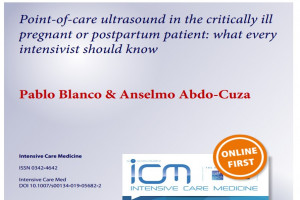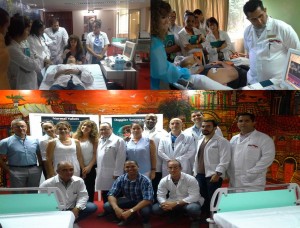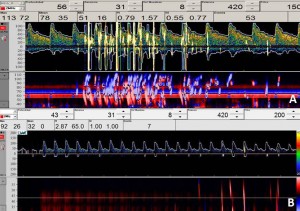 Pregnant and postpartum women account for a low, although not negligible, rate of admissions to the intensive care unit (ICU), being hypertensive disorders of pregnancy and obstetric hemorrhage, the leading causes requiring critical care. Given the widespread use of point-of-care ultrasound (POCUS) in the ICU, most of these complications can be detected and monitored using this method. For using POCUS appropriately, normal changes of pregnancy-puerperium should be well-known by the intensivists for avoiding confusion with pathology. This review summarizes the normal findings of pregnancy and puerperium and its correlation with POCUS, as well as main pathologies observed in this period, both grouped according to POCUS applications: cardiac, lung, abdomen-pelvis, vascular and brain ultrasound.
Pregnant and postpartum women account for a low, although not negligible, rate of admissions to the intensive care unit (ICU), being hypertensive disorders of pregnancy and obstetric hemorrhage, the leading causes requiring critical care. Given the widespread use of point-of-care ultrasound (POCUS) in the ICU, most of these complications can be detected and monitored using this method. For using POCUS appropriately, normal changes of pregnancy-puerperium should be well-known by the intensivists for avoiding confusion with pathology. This review summarizes the normal findings of pregnancy and puerperium and its correlation with POCUS, as well as main pathologies observed in this period, both grouped according to POCUS applications: cardiac, lung, abdomen-pelvis, vascular and brain ultrasound.
Intensive Care Med. 2019 Aug;45(8):1123-1126. doi: 10.1007/s00134-019-05682-2.


Comentarios recientes